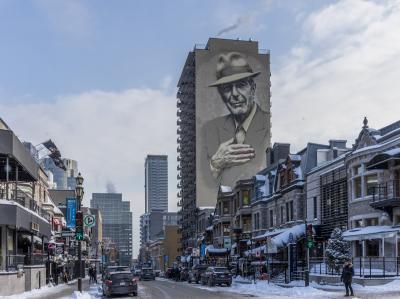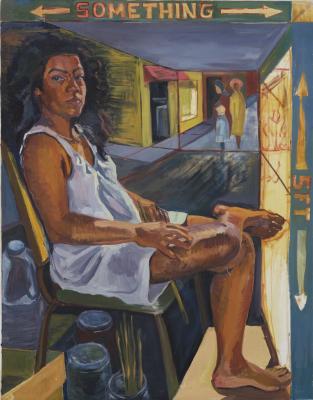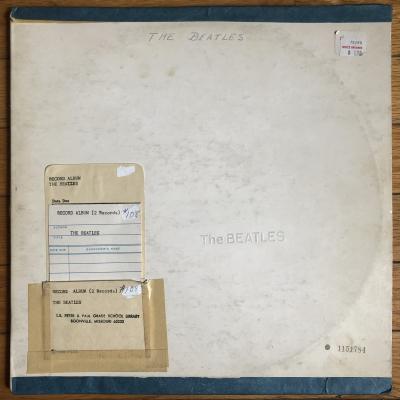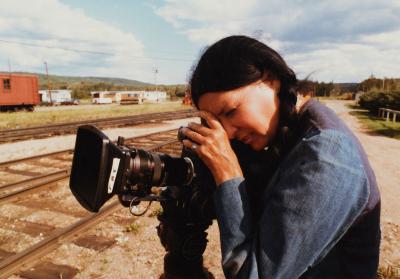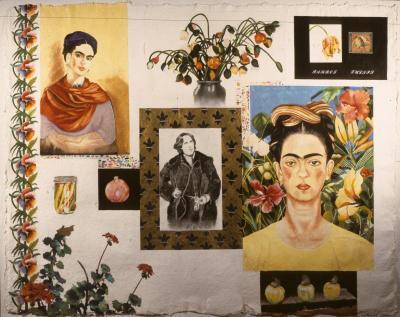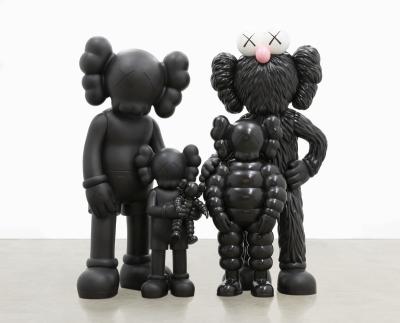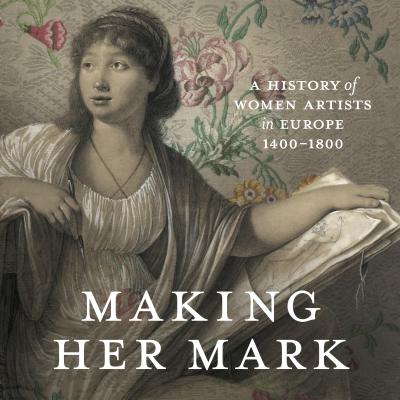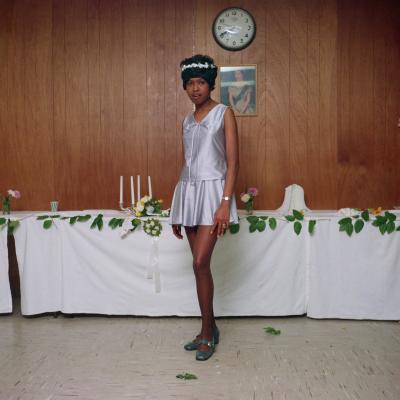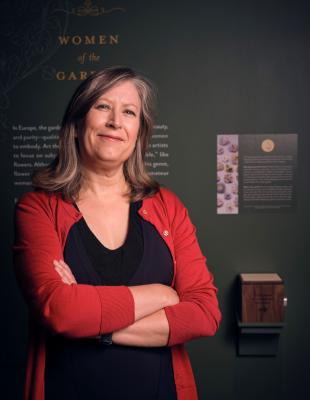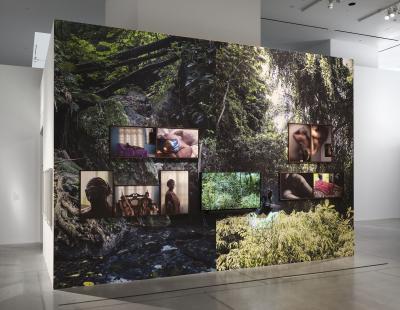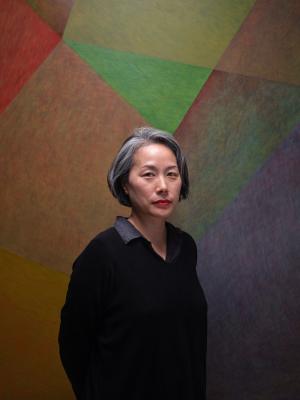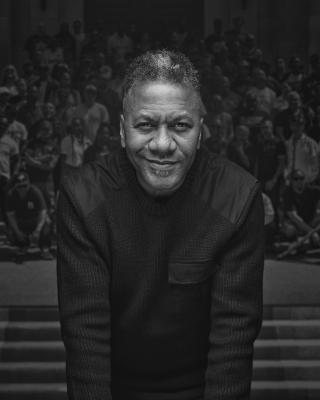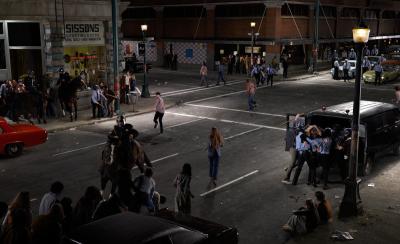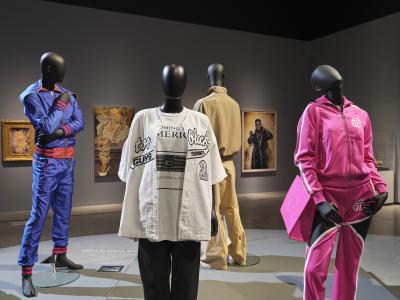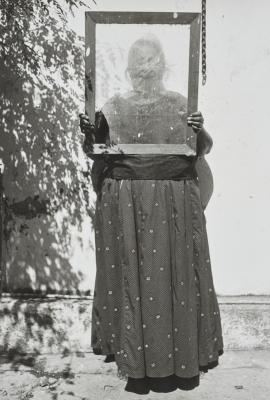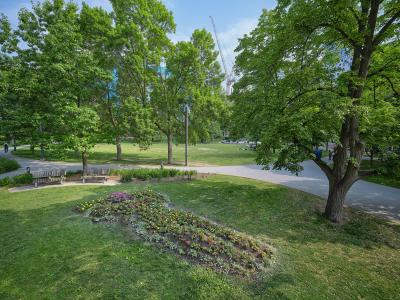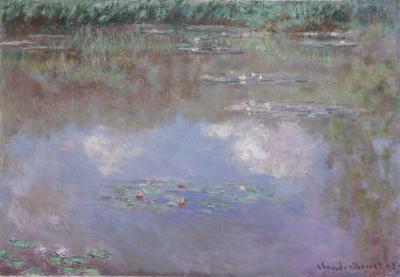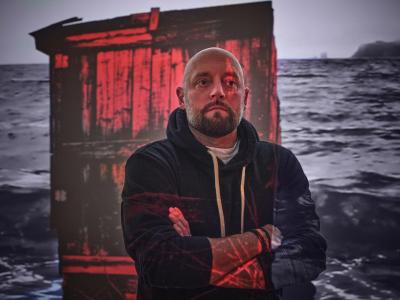On the ground
Catherine Sicot, AGO guest curator, speaks candidly about the complexities of life in San Agustín, Cuba.

Ed Pien. Gladys, (L) 2017; (R) 2015. Diptych: two colour digital prints on rag-cotton paper, 53.3 × 78.7 cm. each print. Courtesy of the artist. Photo: (L) Claudio Pelaez Sordo; (R): Ed Pien.
Canadian curator Catherine Sicot first set foot in Cuba back in 2011, searching for independent curatorial work in a new and stimulating environment. Soon after, she became acquainted with the founders of LASA (Laboratorio Artistico de San Augustín), a social enterprise organization doing arts and community work that deeply aligned with her interests. Before long, she began collaborative work with LASA co-curating and co-producing an ephemeral museum project based in San Augustín, Cuba. It was in her efforts to include new artists from abroad in a future iteration of the same project that she invited Canadian artist Ed Pien to visit Cuba and work with her. The fruits of their labour ultimately ended up being up being Ed Pien: Present: Past/Future, a dynamic multimedia exhibition that chronicles the complex lives of 13 San Augustín residents, on view at the AGO until June 1, 2023.
We recently spoke with Sicot to gain deeper insight about the nature of her work in San Augustín, her collaborative relationship with Ed Pien, and the unique challenges of life in Cuba.
Foyer: Can you describe the work you have done, and continue to do, in Cuba?
Sicot: I first discovered Cuba in 2011 as a tourist and was stoked. It was my first time in a Communist-run country and in a tropical location. I started to work there after I met Cuban artist Candelario and French independent curator Aurélie Sampeur, the founders of LASA. LASA operated as a kind of social enterprise in a country where independent artistic structures were rare. This was a huge inspiration at a time when I was initiating my own independent practice. LASA was employing artists, architects, engineers and workers from different trades at much higher rates than the Cuban government. They were making revenues through commissions and contracts from different government levels. On the artistic side, LASA was producing Candelario’s work along with other artists’ works and events. They were allocating a portion of their revenues to this artistic activity, involving the contributions of their employees, developing foreign partnerships and raising foreign public funds. Since 2008, LASA invited foreign artists to discover San Augustín and exchange with its habitants. Projects have resulted in films, performances and interactive installations, some of them in the public space.
LASA and I had a shared interest in social practices. My previous work in suburbs and areas removed from large urban centres also aligned with their operations outside of the main artistic center of Havana – San Augustín is located 40 km on the outskirts of Havana. I felt blessed when, in the fall of 2011, they invited me to be part of their team as co-curator and co-producer of MAC/SAN (Museo de arte contemporaneo de San Augustín), an ephemeral museum that would run for two weeks during the 11th biennial of Havana in 2012. This project turned out to be very successful. It addressed the absence of a contemporary art museum in Cuba, blurred the line between artwork and framework and explored with 11 artists, the interactions between artistic practices and the public sphere of San Agustín, in the context of the transitioning Cuban social, political and economic reality of that time.
In 2014, we prepared for a second iteration of MAC /SAN to run during the 12th biennial of Havana in 2015, titled La Primavera del amor – the spring of love. In early 2015, LASA ended my collaboration with them. We had received some funding from the Canadian Fund for Local Development to support a winter institute[1] in San Augustín, in preparation for La Primavera del amor, which was scheduled for the following spring. The Cuban government got suspicious and retained the funding for a few months. No further explanation was given to me, and I respected LASA for their choice to interrupt collaboration. Amongst the Cuban artists invited by LASA and I for this second iteration were former dissident artist Glexis Novoa, currently living in Miami, and Luis Manuel Otero Alcantara, a young self-taught artist living in Cuba whose work was already at the time “outside the box”. Luis was attending a six-month artist residency as part of La Primavera del amor. He, along with Maykel Osorbo, is one of two artists that have been imprisoned since July 11, 2021. Luis has been sentenced to a five-year term for performing some of his artworks, for some of his artistic collaborations and his activism between 2016 to 2021.
La Primavera del amor ran without LASA in the spring of 2015, thanks to the many participants, collaborators and funders.
From 2015 to 2018, I developed a series of projects outside Cuba with Cuban curator Yanelys Nunes Leyva and artist Luis Manuel Otero Alcantara .
Today and for the years ahead, my work with Cuba will continue to develop outside of the island. I will continue to support Ed’s project production and diffusion. I will also support initiatives that give visibility to Otero Alcantara’s work. It is my way to support the Cuban art community that believes in freedom of speech and creation. For this I am working with independent Cuban curators currently in the diaspora.
Foyer: Ed Pien: Present: Past/Future, has been in the works since 2014. Can you share some details about your creative process and collaborative relationship with Ed? How did your work in Cuba lead you to working with Ed?
Sicot: I wanted to invite Canadian artists to develop new works as part of La Primavera del amor. It had to be artists whose process involved some form of participation or collaboration. Toronto-based artist/filmmaker Kathleen Hearn had already asked me to connect her with a community of teenagers there. I had been a long-time admirer of Ed’s work and had discovered some work he had done with communities in the north. I had always been impressed by the formal artistic qualities in his art practice and interested in how he was including participation in some of his projects. I simply approached Ed in 2014. I gave him some background on how I was working in Cuba and asked him if he would consider developing a new project in the context of La Primavera del amor. Ed was afraid to be a “tourist artist” but was enthusiastic about discovering Cuba. Shortly after our initial discussion, he came back with this proposal to work with seniors from San Augustín, with their consent. It was a time when he was personally self-reflecting on time and aging, so I assume he saw this invitation as an opportunity to explore the perception of time by developing long-term relations with the persons who were open to collaborating with him on this project until they die. The project is also much more than an art project. It is a confrontation with aging and death that is becoming harder and harder as we go. Ed has also been developing strong ties with Cuba.
The most important thing for me, as a foreigner working in such context, is to listen, to respect and hope that a project would have positive outcomes for everyone – first and foremost for people whose country and lives we are focusing on. I think Ed must have been thinking about this when moving forward with his project because eight years into it, no problems have arisen and my feeling is that the relationships he has built are strong and beautiful.
Ed is both very independent in his creative process and consults with others around him at different moments. He is also very aware of the input of his collaborators. He trusts them and acknowledges them. Renata Azevedo Moreira, [previous] AGO Assistant Curator, Canadian Art, who worked with us on the exhibition told us a few times that she was impressed by how different mine and Ed’s points of view could be sometimes, yet we are always respectful and supportive of each other. I loved that she felt this way. On my side, the collaboration with Ed is successful and precious.
I also want to add that Ed is the main producer. Once he had decided to proceed with this project in Cuba, I did not yet have any funding to start. Ed moved ahead with his own funds and I joined in afterward with additional sources. We have also launched the first series publication that will unfold in separate chapters as the project continues. Ed is also contributing to this production.
Foyer: As young people, all 13 participants included in Present: Past/Future lived through – and some were compelled to participate in – the Cuban Revolution. In your opinion, what are some of the most significant ways this moment in history affects their lives today?
Sicot: My understanding is that any Cuban – pro or against the Revolution – has been massively impacted by the Revolution to this day. On the island, some of the consequences for those who stayed are immediately visible. Any tourist who sets foot in Cuba will see and feel some of it – the feeling of being back in the 1950s, seemingly stuck in a time capsule, the absence of stores and advertising, etc. Back in 2011, people were living with no internet and very limited access to news other than government media. (These conditions have exponentially changed in the space of a few years).
Some of the participants express, in various ways, how holy the Revolution is for them. In the exhibition, if you listen to Marcelino, you will hear him saying that before the Revolution, as a young man, when he would step outside, he did not know if he would come back home alive because of being Black. Barosso who dedicated his life to serving in the army constantly speaks about contributing and being useful to society and the revolution - and it feels that his life will make no sense once he is no longer able to do so. When Fidel Castro passed away, some participants expressed that they felt a pain like losing their own father.
Not all participants express their support in the values and the directions of the Revolution, but none of them express that they disagree with it. Ed knows, I know, Ed’s translator knows, that this is not a question that can be asked to them, as Cuba is not a place where people can express views that differ from official ones. So, I feel I can only partially answer your question. What we can observe though, for example, is the importance and omnipresence of values such as family and work, versus the individualism we are used to on our side. Their home, the décor, the equipment they have or do not have, images on the wall, everything we see in Ed’s photographs and films also speak about how their life is lived, hence impacted, by the Revolution to this day.
Their lives are entangled with the Revolution, for the best and the worse, and they look at all these years with nostalgia.
Ed Pien Present: Past/Future is on view now at the AGO until June 1, 2023.
